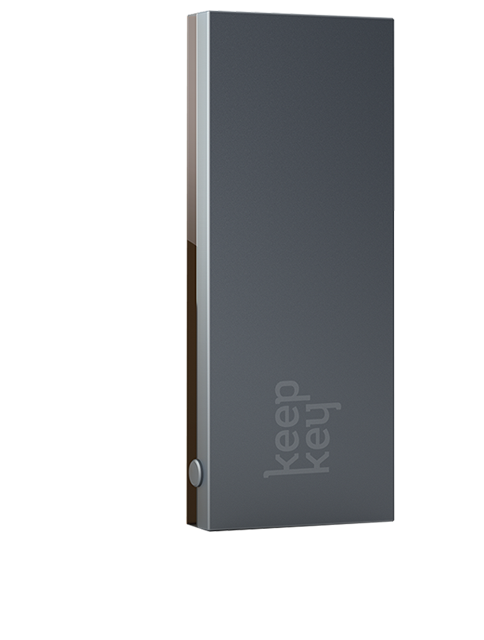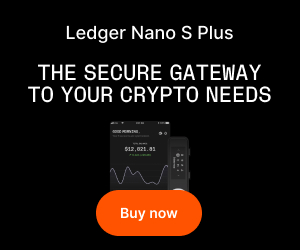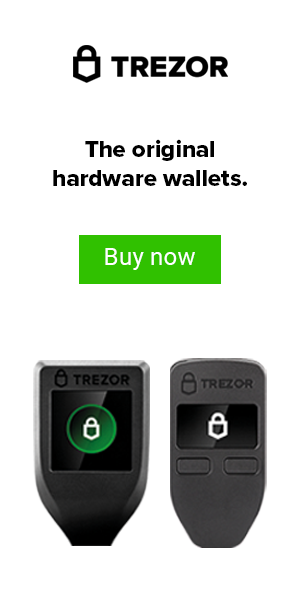You Might also like
-
Ellipal Titan vs D’CENT (2020) | Which Wireless Hardware Wallet Is More Secure?
Ellipal Titan vs D’CENT! In this comparison, we are going to do a head-to-head of two of the most competitive and popular new cryptocurrency hardware wallets in this edition of the hardware wallet roundups.
I am going to dive into which of these hardware wallets is better and more secure. How big is your portfolio? Do you need mobile AND desktop support? Do you use any 3rd party wallets for integration? Do you need web-based access instead of a required download?
These are all questions you will need to consider when deciding which of these wallets will be best for you. At the end of the day, the coin support is one of the most important factors (besides security) when deciding which hardware wallet is best for you.
Ultimately, if it doesn’t support the coins you want to store offline, it won’t work for your particular situation. So keep that in mind as we dive into what I consider to be the most important factors when making such an important decision, such as choosing a cryptocurrency hardware wallet.
Ellipal Titan: Overview
This is a really unique device and has a very robust form factor that has ratings that rival that of some high-end smartphones. What separates this hardware wallet from the majority of other popular wallets is its communication method. So, what do I mean by that? This device has NO: USB Connection, NFC Connection, WiFi Connection, Bluetooth Connection, or Cellular Connection. So, how do you use it? The short answer is: QR Codes.
Ellipal Titan: Security
This is a 100% air-gapped device, so ultimately it is more secure than any other way to interact with a hardware wallet. Period. The device has a tamper-resistant enclosure that includes a self-destruct mechanism for any potential way to access the internals of the device.
It is built in such a way that if anyone tries to break the screen or drill a hole through the device in an attempt to open its internal layout, the private keys will be erased. This is extremely powerful and will ultimately deter people from trying to hack this completely wireless device.
Ellipal Titan: User Experience (UX)
This hardware wallet has a camera, a 4-inch full color display, and does not display any balances on the device itself. The portfolio management and execution of the device is managed via a companion iOS and Android app that is used to initiate transactions and allows you to utilize the camera from your smartphone to transfer funds securely to the cold wallet, and vice versa.
I have been using this device for several weeks now, and in my personal opinion, it has been super easy to use and also very secure. I like knowing that my device is essentially indestructible and does not require any other 3rd party connection in order for it to function. This not only makes it very convenient, but it also very secure and eliminates room for error when typing or copying pasting wallet addresses that you are trying to transact with.
Ellipal Titan: Coin Support
This is always the section I check the most when reviewing hardware wallets, because although functionality and security are important, none of that matters unless it supports the coins you want to store offline. So here is the current list of supported coins and the one that are currently in development listed in the above picture.
D’CENT: Overview
The D’CENT is a mobile and bluetooth connected wireless hardware wallet device. With additional biometric security and the ease of use, this is a contender for the easiest to use mobile and wireless wallet. So how is it different than Ledger Nano X or other bluetooth devices? The Biometric security is a large differentiator here. It’s super convenient and makes it easy to sign and authenticate transactions on the go.
This means if you want to move your crypto from cold storage to a hot wallet, it can be done quickly and easily. A common scenario here would be if you are trying to pay a friend or you’re shopping and want to pay for a product in store very seamlessly. Let’s take a look at the security, features, and price below to go into a little more detail.
D’CENT: Security
The flagship feature of D’CENT is hands down the biometric security feature of the fingerprint sensor. There are some other hardware wallets that communicate with mobile, and can utilize Face ID or Touch ID for extra authentication with their mobile app, but this gives your authentication on the physical device as well. This is a unique and very secure feature that is not used by any other hardware wallet currently on the market.
The hardware wallet features a built-in fingerprint scanner that manages access to the hardware wallet. This security process improves the convenience for the users and enhances the security during access control. It also provides the wallet with fast transaction signing.
- Multi-IC architecture design
- Bank grade EAL 5+ Secure Element (This is the same security chip used in the Ledger Nano X)
- Secure OS embedded on microprocessor
D’CENT: User Experience (UX)
One of the main features I like here is the option to generate a valid QR code on the large OLED screen of this device as a way to send funds directly from your smartphone to your D’CENT wallet. This is super convenient and truly makes this a wireless and independent device that can be used on the go via the D’CENT app, which also includes a market price section and of course all of your wallets and current fiat amount stored within each one.
What’s also nice is you no longer need to backup and restore this device for firmware upgrades like you do with other devices (although you can, since this device can also support bluetooth and USB connectivity if you choose). This makes this a very convenient choice when considering the ease of use and security when choosing how to secure your private keys.
D’CENT: Coin Support
The coin support is varied. The D’CENT can store and support: Bitcoin, Ethereum, ERC20 tokens, RSK, RRC20 (RSK tokens), Ripple (XRP), and MONACOIN. To many, this may not seem like it is very much, however, a majority of the major tokens are ERC-20 tokens and all can be supported natively on this device, which is good. I have not come across a hardware wallet yet that supports RSK and RRC20 tokens yet natively, so that definitely makes this an exclusive hardware wallet first for the D’CENT wallet!
Ellipal Titan vs D’CENT: Conclusion
Overall, these are two very unique wallets, even though they are both wireless. On the one hand, the D’CENT wallet is cheaper (with my current discount of $106) and has a biometric authentication via fingerprint sensor. This is extremely compelling.
On the other hand, the Ellipal Titan is completely air gapped and is transmitted through scanning QR codes on the device camera and allows for multi-factor authentication. Both are unique in my opinion and have different selling points.
At the end of the day, you need to ask yourself what coins you need to store offline, and if you prefer a large or smaller device. They are both secure in their own unique ways, but I would have to still go in favor of the ELLIPAL TITAN.
You can’t beat the air-gapped security, and the user experience is much better on a larger screen, which also makes it easier to navigate and use on a regular basis. Although, if there was an under screen fingerprint sensor on future hardware wallet, that was also air-gapped and transmitted through QR codes, that would be a home run.
What do you think? Would you choose the BC VAULT over the D’CENT Wallet? Let us know down below in the comments!
Cheers,
The Crypto Renegade
NOTE: This post may contain affiliate links. This adds no cost to you but it helps me focus on giving as much value as possible in every single post by being compensated for recommending products that help people succeed.
Post Views: 0 -
Hot Wallets Vs. Cold Wallets – Which One Should I Use?
In this article, I am going to dive into hot wallets vs. cold wallets – which one should I use? This is an interesting topic, and in fact, it was one of the first topics I started researching when I first discovered cryptocurrency and ultimately inspired me to create this website. As you can see, I have a bias towards cold storage wallets, but what exactly is the difference? I am going to discuss below what the pros and cons of a hot wallets vs cold wallets are and in what scenario you would need to use both. As cryptocurrency payments become ubiquitous, it’s important for your own safety and best security practices in managing your wallets and private keys on an on-going basis. Let’s begin.


WHAT IS A HOT WALLET?
In short, a “hot wallet” is a digital wallet for your cryptocurrency that is connected or is easily connected to the internet. This provides a lot of convenience for making day to day purchases as most active hot wallets are either on your smart phone or also on a desktop wallet on your computer for easy access for making online purchases. I always use the comparison of using your hot wallet like you would for a wallet in your back pocket that holds your credit cards, ID, and fiat. By a general rule of thumb, you should never hold more money on your hot wallet than you would normally keep in your leather physical wallet on a regular basis. Most people never keep any more than a couple hundred dollars in there at any given time, which is smart. The same applies to a hot wallet.
These wallets are designed for your average day to day spending. This could be at your local merchant down the street, or even if you’re browsing online at and trying to purchase gift cards at a site like bitrefill.com. This is done typically by scanning the screen’s QR code with your smartphone via your own wallet to make a quick transaction and simple transaction or even buy something off Amazon (like millions do everyday), but by using Purse.io, which is a platform that is built on top of amazon but accepts multiple cryptocurrencies as payment, and at a steep discount. Click this link to get some free BTC if you want to get started. Most purchase discounts range anywhere from 15-33% off anything at Amazon through this site.


These are just a few examples of how/when you would use your hot wallet for a simple transaction. You can also pre-load Bitcoin (BTC) and Bitcoin Cash (BCH) on Bitpay’s visa debit card. I will link my video review of this from Youtube HERE.
WHAT IS A COLD WALLET?
A “cold wallet” is also a digital (or sometimes physical, in the form of a hardware wallet) wallet that is kept completely offline. Why? Because any funds that are kept offline cannot be hacked or tampered with. You can think of this as virtual bank vault, that is very secure, hard to access, and is designed to store your larger amounts of crypto and primarily your longer term holdings. There are many advantages to having these wallets, and even safer to implement Multi-Sig wallets. It is also recommended to diversify your holdings between multiple hardware wallets when you start to accumulate a vast sum of crypto.
I have a soft spot specifically for hardware wallets as I’ve actually designed and built one for a prominent cryptocurrency company (although due to an NDA, I cannot discuss it yet). But the reason I think it’s important is because using and owning this kind of device is like putting up a nice big middle finger to the big banks and over-reaching governments that tend to control our money supply and bank accounts whenever they see fit. No “authority” should have that kind of power. Hardware wallets are symbolic of sovereignty and self-reliance. That is why literally “becoming your own bank” is so important. One of my favorite quotes in this space is “Whoever controls the people’s means of exchange, controls the people”. This is scary, but very true. When you use cryptocurrency, you are taking personal control and responsibility of your finances, and that is SO empowering. Just writing about it send chills down my spine, but I digress.


If you are new to hardware wallets, I recommend getting a Keepkey device for beginners. Why? I have been testing their closed beta of their new platform and it is by far the easiest and most user friendly hardware wallet platform I have used (and I’ve used almost every one of them). I think I could teach my grandma how to use it, and that’s saying something. The current platform works fine, but the future platform is very exciting and if you are brand new, you will be pleasantly surprised. I will be writing a review on this platform shortly and I will update this post with a link as soon as I do, so stay tuned.
WHY WOULD I NEED EITHER ONE?
As you can see from the examples of use cases listed above, it is important to protect your cryptocurrency and make it useful and convenient when you need it. But it’s even more important to protect it and secure it when it’s required. As the user adoption begins to snow ball, it’s crucial for everyone to understand that they will need both a hot and cold wallet for their various uses. You can even make transactions online with your hardware wallet connected via USB for even more protection. Most hardware wallets never expose their private keys to the internet when making the transactions by design. This is super helpful because you want to ensure that from every point in a given transaction, you do not want your private keys to be exposed in transit and potentially have your keys copied by a 3rd party before it reaches the intended destination.


Having said that, most digital wallets on your smart phone are typically secure enough for day to day spending and you shouldn’t be too concerned, so long as you have a trusted wallet for your phone. The top 3 I use on a regular basis is Bitpay, Jaxx, and Blockchain. These are all non-custodial wallets and have security features built in and can have 2FA or (two-factor authentication) enabled to confirm each transaction and will include Touch ID and Face ID, if you enable it.
I already recommended my top hardware wallet for beginners in the previous section, but any of the wallets that I offer through this website, are all trusted and good to use, it just depends on your needs and wants out of a secure air-gapped device.
Please sound off below! What hot and cold wallets do you like? Do you have any other wallets you can recommend not listed above? Let me know in the comments!
Cheers,
The Crypto Renegade
NOTE: This post may contain affiliate links. This adds no cost to you but it helps me focus on giving as much value as possible in every single post by being compensated for recommending products that help people succeed.
Post Views: 0


















